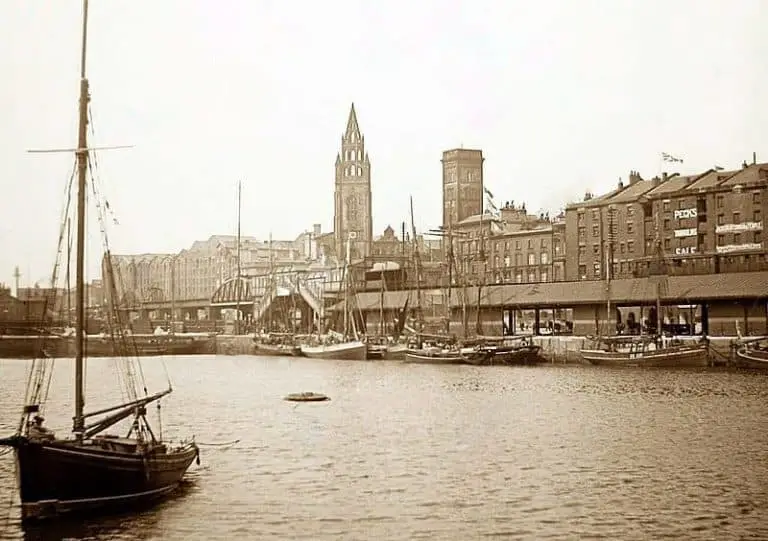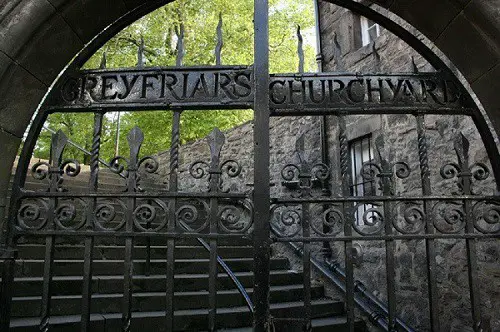Body Snatching | St Cuthbert’s Kirkyard, Edinburgh
As one of the top five historical graveyards in Edinburgh, St Cuthbert’s, once known as the West Kirk, is sometimes overlooked for its wider body snatching connections.
Mention the watchtower and most people have probably finished with the graveyard’s darker links to the past, but there’s so much more than that if you care to step inside.
St Cuthbert’s first became plagued by body snatchers in the early eighteenth century when in 1738, in a vain attempt to keep the body snatcher at bay, the perimeter walls were raised to a height of 8ft (2.5m). Thefts of cadavers became so bad that in the western corner of the site a watchtower was built in 1827. Warning shots would also echo around the graveyard as an armed guard randomly fired bullets at potential intruders from the nearby Lothian Road.
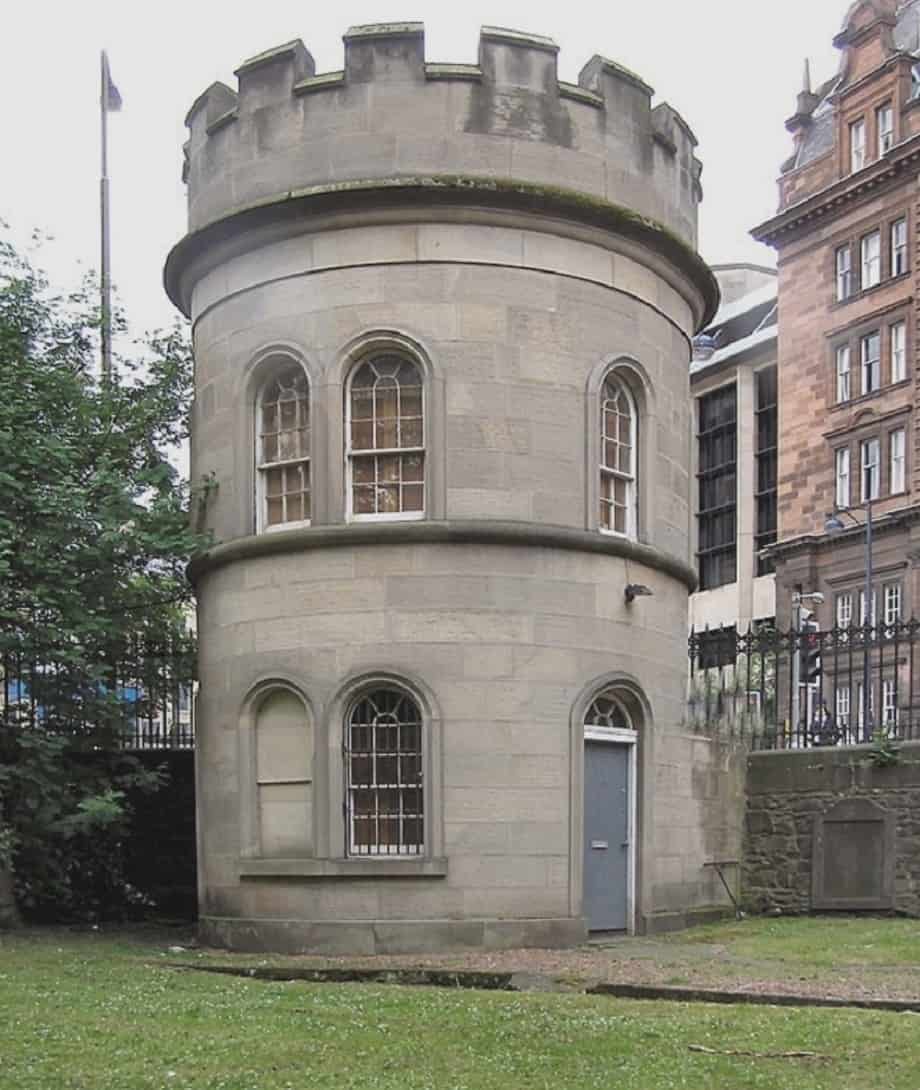
In the eighteenth century, the cold nefarious deeds of Edinburgh’s body snatchers were being played out in the quiet and at the time rural, kirkyard of one of Edinburgh’s oldest graveyards.
But what did happen between 1738 and 1827 to cause the walls to be heightened, and for an armed watch to be posted on the perimeter?
In this post, I look beyond the watchtower and take a look at events that, by all accounts, were starting to get the surgeons and anatomists of Edinburgh noticed.
Anatomy at the Time of Edinburgh’s First Body Snatching Riot
St Cuthbert’s was targeted a number of times before, as is often quoted, the Anatomy Act put pay to the activities of the body snatchers.
In this post, I’ll be focusing on the Spring of 1742 and looking at the main body snatching case to affect St Cuthbert’s, but it’s still interesting to see a timeline for some of the key events to help put things into perspective a little before we start.
Below are the cases and reactions we know about for St Cuthbert’s, the ones that are written in most of the history books relating to body snatching if you look deep enough.
The Demand for Cadavers at Edinburgh’s Medical Schools
When those first cadavers were being snatched from St Cutherbert’s kirkyard, the medical students of Edinburgh would have been attending extra-mural anatomy lessons at Surgeon’s Hall under the Incorporation of Surgeon’s or, after 1726, under Professor Monro (the first in the Monro Dynasty) at the University.
Demand for cadavers was high and supplies were not always available. It was not unheard of for Monro’s students to fish around in a barrel of brine at the start of an anatomy lesson hoping to extract an arm here or a leg there that hadn’t been hacked up too much with a dissecting knife.
In these early days of body snatching, the students were so keen to learn anatomy in Edinburgh that they pilfered their own corpses and had little thought as to the sanctity of the ground which they were disturbing.
The way in which anatomists obtained their cadavers in Scotland varied greatly from city to city, a topic that I’ve discussed further here. Edinburgh had its gangs, Glasgow students paid their tuition fees with cadavers (and so were the main pilferers of graves), and Aberdeen operated an ‘all hands on deck approach’ to body snatching.
Body Snatching at Greyfriars Kirkyard
The first rumblings that anatomists and students had overstepped the mark in the Edinburgh’s graveyards, however, came in 1711 when the public made their distaste known after yet another raid on the more famous Greyfriars Kirkyard.
The Incorporate of Surgeon’s weren’t too pleased with events either:
of late there has been a violation of sepulchres in Greyfriars Churchyard by some who most unchristianly has been stealing, or at least attempting to carry away, the dead bodies out of their graves
Their disgust fell on deaf for only ten years later, in 1721, the College of Surgeon’s was forced to issue another warning to the students, this time expressing their intolerance of this over-enthusiastic sport. A clause, expressly forbidding students to be involved in the exhumation of dead bodies, was inserted into their Indentures.
But as we all know, the lure of medical knowledge was driving up the want for cadavers and body snatching, be that by students or professionals was only just getting started.
Edinburgh’s First Body Snatching Case
St Cuthbert’s, although plagued with early body snatching attempts, didn’t really come into the history books for this phenomenon until 1738 when the bricks and mortar came out and the scaffolding went up around the kirkyard wall.
The claim to Edinburgh’s earliest body snatching story, therefore, must go to Greyfriars when in February 1678, a gypsy boy was found missing from his grave the day after his hanging.
Four members of the notorious gypsy family, the Shaw’s, had all been sent to the scaffold on the same day in 1678 for murdering ‘Old Sandie’ Faw, head of a rival family, together with his pregnant wife in a fight. After swinging from the gallows, all four men were hastily buried in a shallow pit. Come the morning light, the youngest of the family was missing and body snatchers were to blame.
Although numerous rumours circulated about the events in Greyfriars that night, including that the teenager had risen again after a botched hanging, the favoured theory centred around him being taken by body snatchers, making this the earliest known body snatching case in Edinburgh.
Edinburgh’s First Anatomy Riot
Although things seemed to settle down in Edinburgh regarding its corpse stealing, it was to come to a spectacular, if not temporary halt in the spring of 1742 when the body of Alexander Baxter was discovered lying naked in the premises of surgeon apothecary, Martin Eccles.
After discovering Baxter’s naked body (it is not known how it was discovered), a scene that was to be repeated a few nights later, started to be played out on the city streets.
Edinburgh’s first anatomy riot, started March 9th 1742 and rumbled on for the coming weeks. Initially failing to find momentum, on March 15th the rioters were once again out in force. Targeting the home of a former Beadle, his home ‘Resurrection Hall’ was demolished and further attacks on assumed body snatchers commenced. The riot eventually stopped with the trial of John Samuel in July 1742 who was publically whipped and banished from Scotland for seven years.
Homes and individuals were targeted that spring of 1742 as we shall see, but in summary, the mob’s main targets were are follows:
| Name of Body Snatcher | Occupation | Location | Punishment |
|---|---|---|---|
| Martin Eccles | Surgeon/Apothocary | Niddrey’s Wynd | Shop Demolished |
| George Haldane | Beadle of West Kirk | ‘Resurrection Hall’ | Home Demolished |
| John Drummond | Sedan Chair Master | Netherbow Port | Banished |
| John Forsyth | Sedan Chair Carrier | Netherbow Port | Banished |
| John Samuel | Gardener | Grangegateside | Whipped & Banished |
Marching to the Beat of the Portburgh Drum
In eighteenth-century Edinburgh, when authorities wanted to get the townsfolk’s attention, the city guard would beat a drum calling people to action.
On this particular March night, the mob was intent on drumming up a crowd and the leaders snatched the Portburgh Drum, so named after the area in which it was located, and started to furiously beat it as they walked along the Cowgate on their way to Eccles’s shop.
Rioting Starts in Edinburgh
There was no stopping them, Eccles’s premises were demolished by the baying crowd who had been summoned to Niddery’s Wynd by the call of the Portburgh Drum.
Within four days of Eccles’s shop being targeted, a further clause was written into students’ Indentures, as the Incorporation of Surgeons once again showed their disgust at the level of body snatching in the city and student involvement in the practice.
This time, the Incorporation warned that if students were found guilty of any involvement they would be dismissed and the agreement with their master immediately made null and void. To top things off, their masters would also face immediate dismissal.
To make this threat stand even further, the Incorporation offered a reward of 100 merks*, that is £7 13s 10d (or around £900 today) to anyone who gave information about either students or their masters being involved in the ‘abhorrence of so wicked a crime’ as body snatching.
Edinburgh’s First Body Snatching Riot Rumbles On
On 15th March the mob reassembled, this time determined to target the home of West Kirk Beadle, George Haldane. Haldane was suspected of having his hands coated in the blood of the body trade and the parishioners of Edinburgh were having none of it.
His house, dubbed ‘Resurrection Hall’ for it was believed to have been built off the back of corpses, was heavily targeted. When fragments of old coffins were found amongst Haldane’s belongings the mob ransacked his home, returning at 9 am the following morning to finish the job off.
On 28th March, some accounts say 26th, Jock Dalgleish, hangman of the city, threw a sedan chair onto an open bonfire. A few weeks earlier the same chair had been randomly stopped and inside was found a corpse, no doubt on its way to one of the surgeons.
Two sedan chair handlers, John Drummond, the chair master and John Forsyth, carrier, pleaded their ignorance of the whole affair to an already furious mob. They weren’t to be believed and were subsequently banished from the City.
Gardener John Samuel was next on their list. Making their way to his home in Grangegateside, there was no stopping the mob. They were persuaded to walk away from his home, however, and not to destroy it on the promise that he would keep his nose clean in the future.
A Body Snatching at Old Pentland Kirkyard
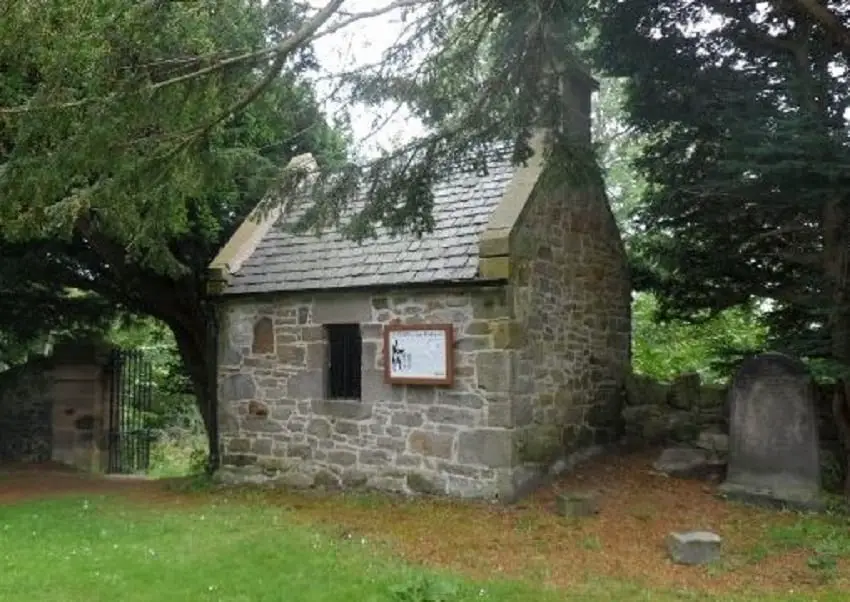
On 6th April, a man clutching a bag under his arm was stopped by the guard walking through the gates at Potterrow Port. The bag contained the dead body of Gaston Johnston, a young boy who had been buried in the kirkyard of Old Pentland, 9 miles west of Edinburgh.
The man was John Samuel, the very same John Samuel who had promised the mob he’d stop sifting through graves.
Rather surprisingly, he was allowed to go home after a few rudimentary questions were asked although he soon began to wish he hadn’t. The mob followed him back to his home and started tearing his house apart.
At Samuel’s trial in July, no proof of his involvement in digging up Gaston’s body was found, only that he was guilty of carrying the dead body into Edinburgh. His sentence involved humiliation in front of thousands for he was whipped through Edinburgh’s streets and banished from Scotland for seven years.
And so ends the tale of Edinburgh’s first riot and the main body snatching case linked with Edinburgh’s oldest churchyard.
There are bound to be more body snatching cases yet to surface from the archives, the kirkyard was a popular haunt and as you can see, the body snatching prevention failed to put a stop to the snatchings. But for now, I hope you’ve enjoyed stepping inside St Cuthbert’s with me, if only for a little while.
A Brief History of St Cuthbert’s
St Cuthbert’s, formerly known as the West Kirk, lies in Edinburgh’s New Town, and holds the accolade of being the oldest Christian site within the city that has been in continual use since its beginnings as a small chapel in the seventh century.
The graveyard was ‘meant’ to be closed to new burials in 1863, however, after defying all the rules, the church found space to squeeze a few more coffins in and were eventually forced to close in 1873 after being taken to court for ‘permitting a nuisance’.
The site has some unusual features; a pavement directing commuters and tourists over the eastern section of the graveyard, many not knowing that they are walking above gravestones as they go about their daily tasks, oh and caged lairs…let’s not forget about the caged lairs.
But I think that’s enough reading for the time being and so I’ll leave St Cuthbert’s body snatching history to your imagination for now, and return to the caged lairs at another time if, of course, you don’t mind…
Researching Body Snatching at St Cuthbert’s
*A Merk was an old Scottish silver coin which by 1681 was worth 14s, the same as 1s in England.
The story of Edinburgh’s first anatomy riot can be found in quite a few body snatching books. If you want just the one recommendation then I’d have to say Norman Adams ‘Scottish Bodysnatchers‘ is probably going to be it. The link above will take you to Abebooks.co.uk but you can also buy the book elsewhere if you wish.
There’s not much in there though, so don’t buy the book expecting it to just cover this case, it doesn’t, but it does give an account of it. Without going into the court records, however, there’s not much further to add to what I’ve written here.
The kirkyard is easily found within the City, mainly because its watchtower stands on the corner of a major crossroads and also in front of one of Edinburgh’s most beautiful hotels The Waldorf Astoria, Edinburgh – The Caledonian


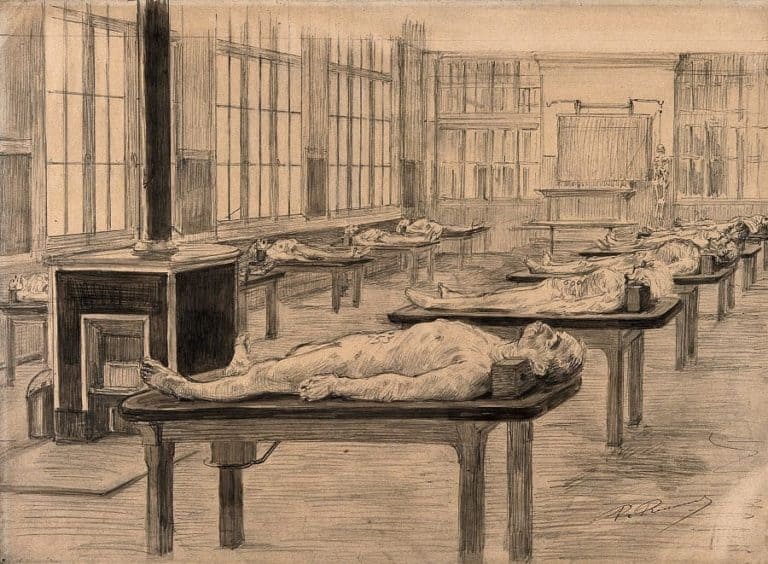
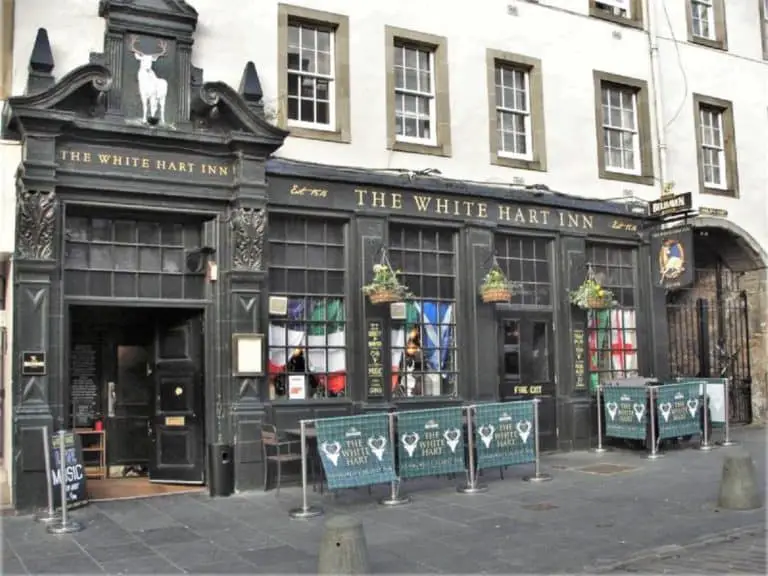
![‘[A] Miraculous Circumstance’](https://mymacabreroadtrip.com/wp-content/uploads/2020/04/Rawlinson-Resurrection-Men-via-Wellcome-Library-Diggingup1800-768x934.jpg)
